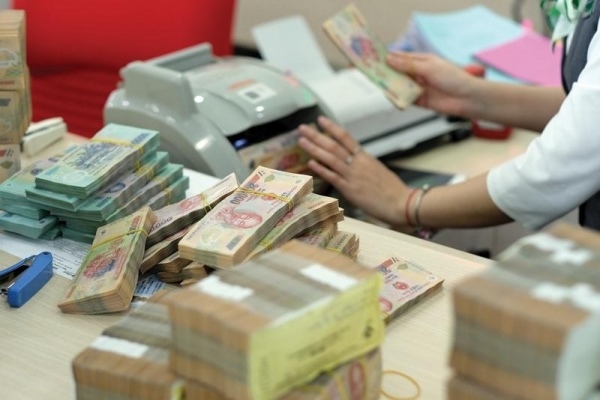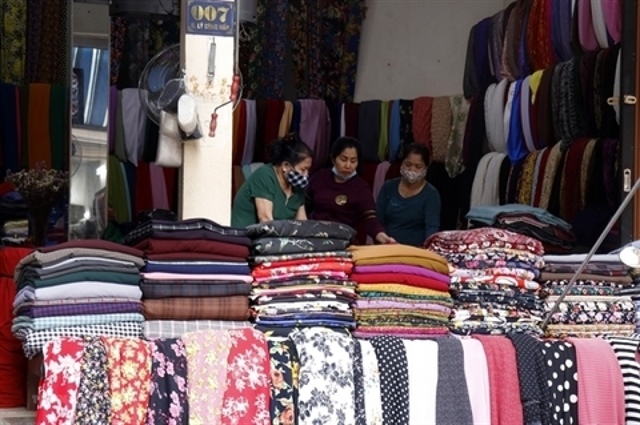Tax reform to boost fairness and growth
Tax reform to boost fairness and growth
The Ministry of Finance is suggesting a major overhaul of personal income tax, aiming to reduce complexity, ease compliance, and encourage economic growth through a fairer, simplified structure.
In the latest draft version of the Personal Income Tax Law, the Ministry of Finance (MoF) has proposed cutting the number of progressive tax brackets from seven to five, with rates ranging from 5 per cent to 35 per cent.
In the draft law currently open for public comment, the MoF presents two scenarios (see charts below)for amending the tax table, both aimed at reducing the number of brackets and widening income ranges between them.
Under both scenarios, the minimum tax rate of 5 per cent would apply to taxable monthly incomes of VND10 million ($400), after deducting family allowances and other permitted expenses.

The tax reform aims to scale up support for individuals and businesses |
The highest tax rate of 35 per cent will apply to monthly taxable income exceeding VND80 million ($3,200) under the first option, and VND100 million ($4,000) under the second.
According to the MoF, narrowing the number of tax brackets will simplify tax administration and declarations, align with global tax reform trends, and facilitate a more transparent and streamlined system. Both proposed scenarios meet the goal of reducing the bracket count while adjusting taxable income thresholds appropriately.
Nguyen Quang Huy, director of the Faculty of Finance and Banking at Nguyen Trai University, stated that a more reasonable structure would ease the tax burden and motivate individuals to work and contribute more actively.
“When tax rates are adjusted appropriately, high-income earners no longer feel excessively taxed, and are more likely to increase their official income rather than seek ways to avoid taxes,” Huy noted.
“In a rapidly changing economic environment, adjusting tax policies flexibly and in line with reality is essential to foster growth among workers and the broader Vietnamese economy,” he added. “Reforming the progressive tax table will ensure fairness and drive economic development, incentivising high-quality labour and supporting a sustainable state budget.”
Vietnam's current Personal Income Tax (PIT) Law applies a progressive tax structure with seven brackets, 5 per cent, 10 per cent, 15 per cent, 20 per cent, 25 per cent, 30 per cent, and 35 per cent, on income from wages and salaries.
Many, however, argue that the current system is overly complex, with too many tiers and narrow gaps between brackets. This results in bracket jumps when annual income is aggregated, often leading to a higher final tax obligation and more taxpayers required to settle their accounts, even when the difference in tax payable is marginal.
The MoF noted that progressive tax systems are commonly adopted in many countries. A recent global trend is to simplify tax schedules by reducing the number of brackets.
Regarding tax rates, the MoF observed that several countries have recently raised their top personal income tax rates. For instance, in 2024, Finland raised its highest rate from 57 per cent to 57.3 per cent, Lithuania from 20 per cent to 32 per cent, and Mauritius from 15 per cent to 20 per cent.
In Asia, top personal income tax rates vary. Japan, South Korea, and China apply a 45 per cent rate; Malaysia 30 per cent; and the Philippines and Indonesia 35 per cent. On the other hand, some countries have a 0 per cent minimum rate, including Malaysia, Algeria, and India.
The number of tax brackets differs across countries, depending on their economic conditions and tax policy objectives. In Asia, countries surveyed have between 5 and 13 brackets, with Singapore having the highest number at 13 tiers.
At an MoF press meeting on July 2 in Hanoi, Truong Ba Tuan, Deputy director of the Tax Policy and Fee Management Department, revealed that the agency is drafting the PIT Law(replacement), leveraging a comprehensive evaluation of current regulations, existing limitations, and international practices.
"Significantly, the draft law redesigns the progressive tax schedule for income from wages and salaries. The current 7-tier structure is being considered for streamlining and simplification," Tuan said. “This revision aims to clarify the principles of tax calculation, ensure fairness, and make it easier for taxpayers to comply.”
The replacement PIT Law, with practical changes intended to support citizens, is expected to be submitted to the National Assembly at its upcoming session this October.
Two proposed personal income tax bracket options
( Source: MoF )
Option 1:
|
Tax bracket |
Monthly taxable income range |
Income range per racket |
Tax rate |
|---|---|---|---|
|
1 |
Up to VND10 million ($400) |
VND10 million ($400) |
5% |
|
2 |
Over VND10 million to VND30 million (over $400 to $1,200) |
VND20 million ($800) |
15% |
|
3 |
Over VND30 million to VND50 million (over $1,200 to $2,000) |
VND20 million ($800) |
25% |
|
4 |
Over VND50 million to VND80 million (over $2,000 to $3,200) |
VND30 million ($1,200) |
30% |
|
5 |
Over VND80 million ($3,200+) |
35% |
Option 2:
|
Tax bracket |
Monthly maximum income range |
Income range per racket |
Tax rate |
|---|---|---|---|
|
1 |
Up to VND10 million ($400) |
VND10 million ($400) |
5% |
|
2 |
Over VND10 million to VND20 million (over $400 to $800) |
VND10 million ($400) |
15% |
|
3 |
Over VND20 million to VND60 million (over $800 to $2,400) |
VND40 million ($1,600) |
25% |
|
4 |
Over VND60 million to VND100 million (over $2,400 to $4,000) |
VND40 million ($1,600) |
30% |
|
5 |
Over VND100 million ($4,000+) |
35% |
- 15:31 23/07/2025




























